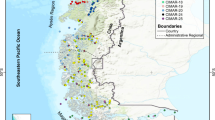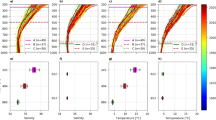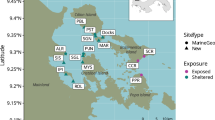Abstract
THE bathymetric distribution of marine organisms collected during oceanographic expeditions is often difficult to ascertain because retrieval methods (nets, dredges, and so on) do not always indicate the precise depth at which an organism is entrapped. The level at which organisms dwell can, however, be accurately defined by deep ocean bottom photography.
This is a preview of subscription content, access via your institution
Access options
Subscribe to this journal
Receive 51 print issues and online access
$199.00 per year
only $3.90 per issue
Buy this article
- Purchase on Springer Link
- Instant access to full article PDF
Prices may be subject to local taxes which are calculated during checkout
Similar content being viewed by others
References
Roper, C. F. E., and Brundage, W. L., Ocean Industry Magazine, April, 52, 54 (1970).
Author information
Authors and Affiliations
Rights and permissions
About this article
Cite this article
JAHN, W. Deepest Photographic Evidence of an Abyssal Cephalopod. Nature 232, 487–488 (1971). https://doi.org/10.1038/232487b0
Received:
Published:
Issue Date:
DOI: https://doi.org/10.1038/232487b0
This article is cited by
-
First in situ observation of Cephalopoda at hadal depths (Octopoda: Opisthoteuthidae: Grimpoteuthis sp.)
Marine Biology (2020)
-
The blind octopus, Cirrothauma
Nature (1978)
Comments
By submitting a comment you agree to abide by our Terms and Community Guidelines. If you find something abusive or that does not comply with our terms or guidelines please flag it as inappropriate.



